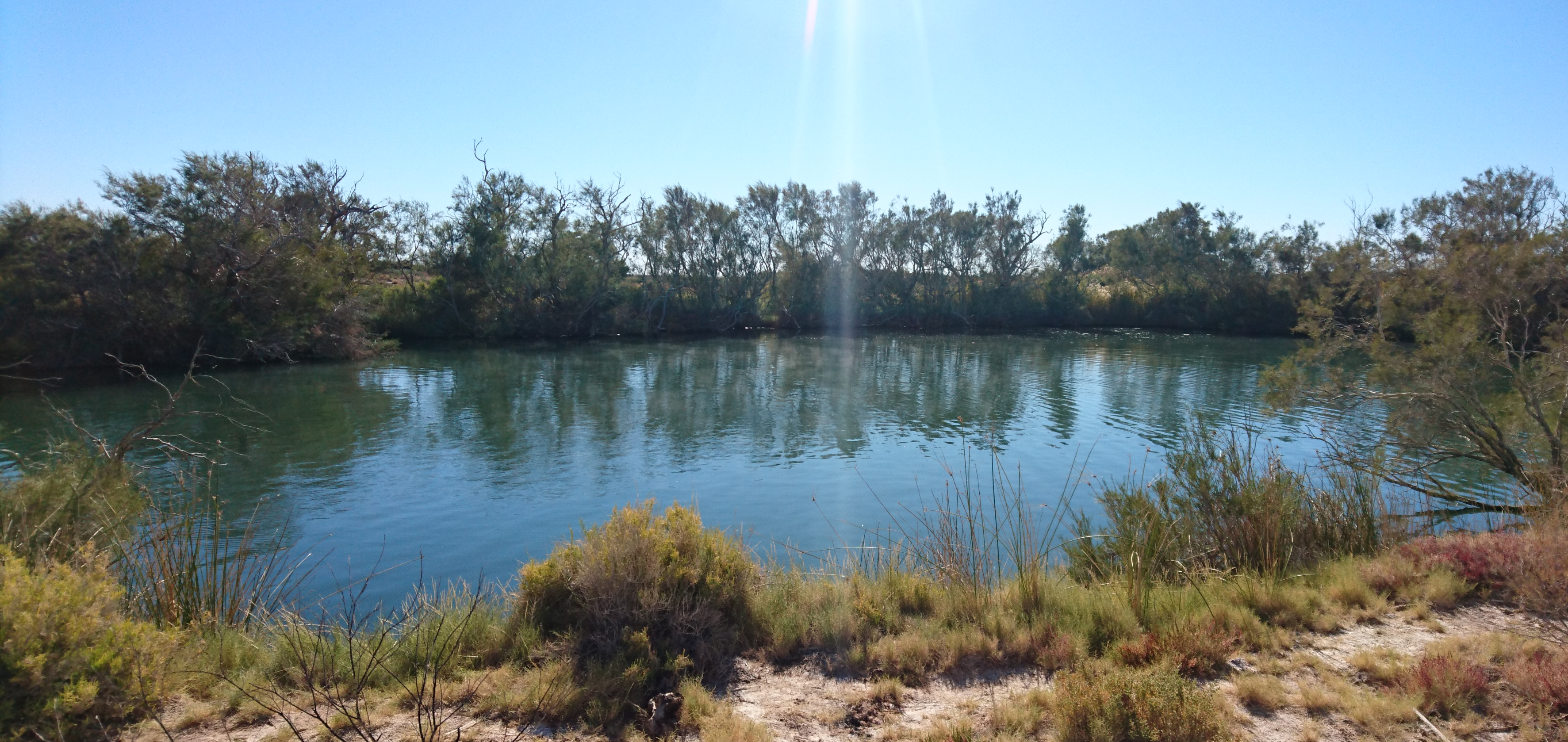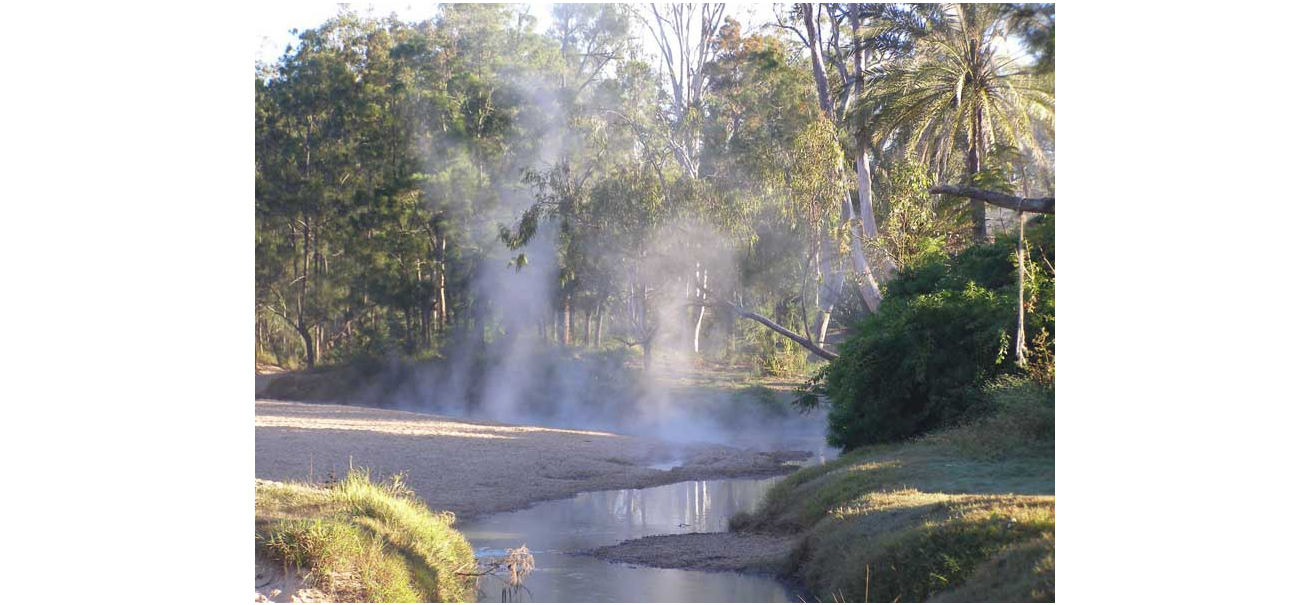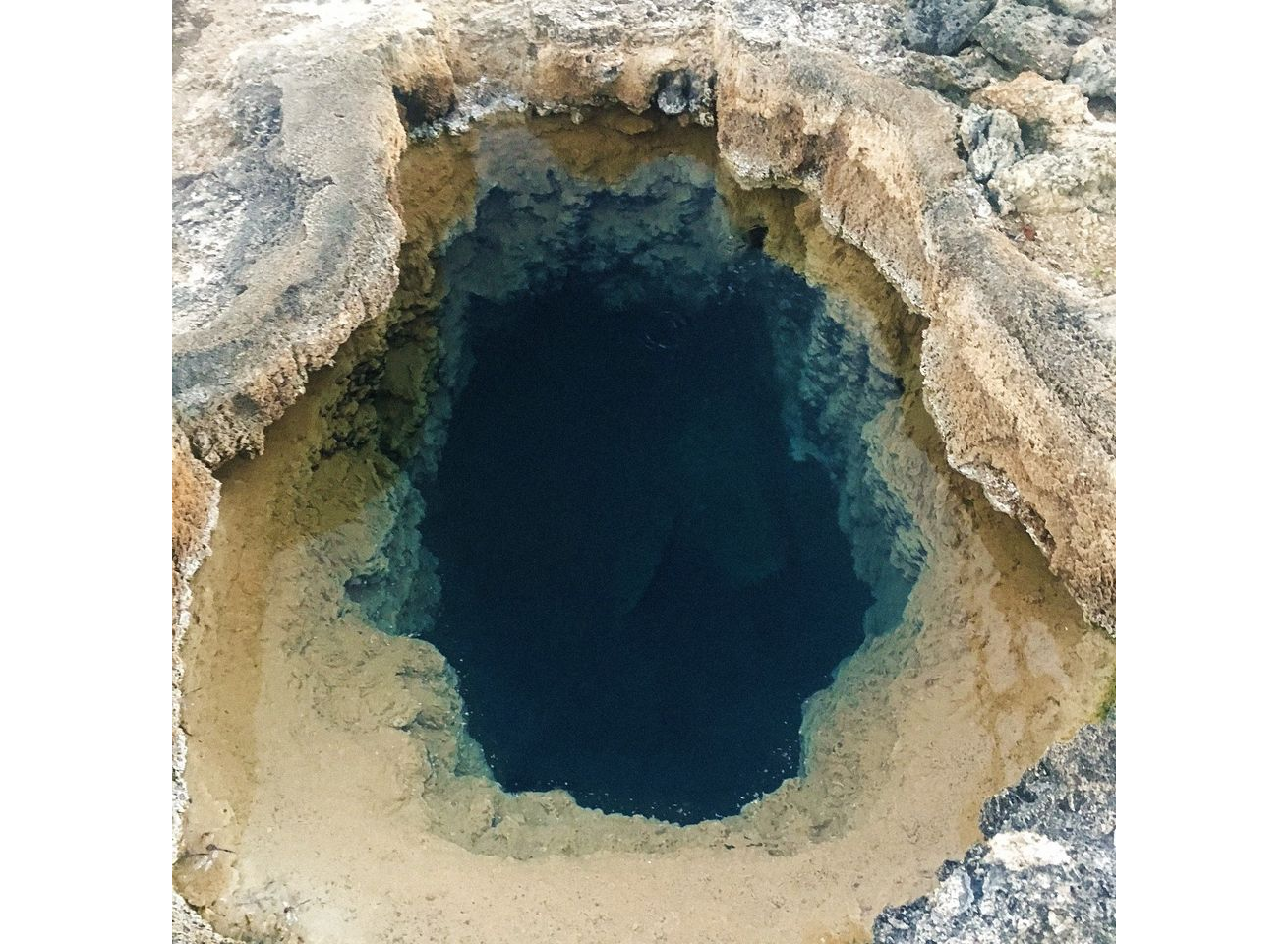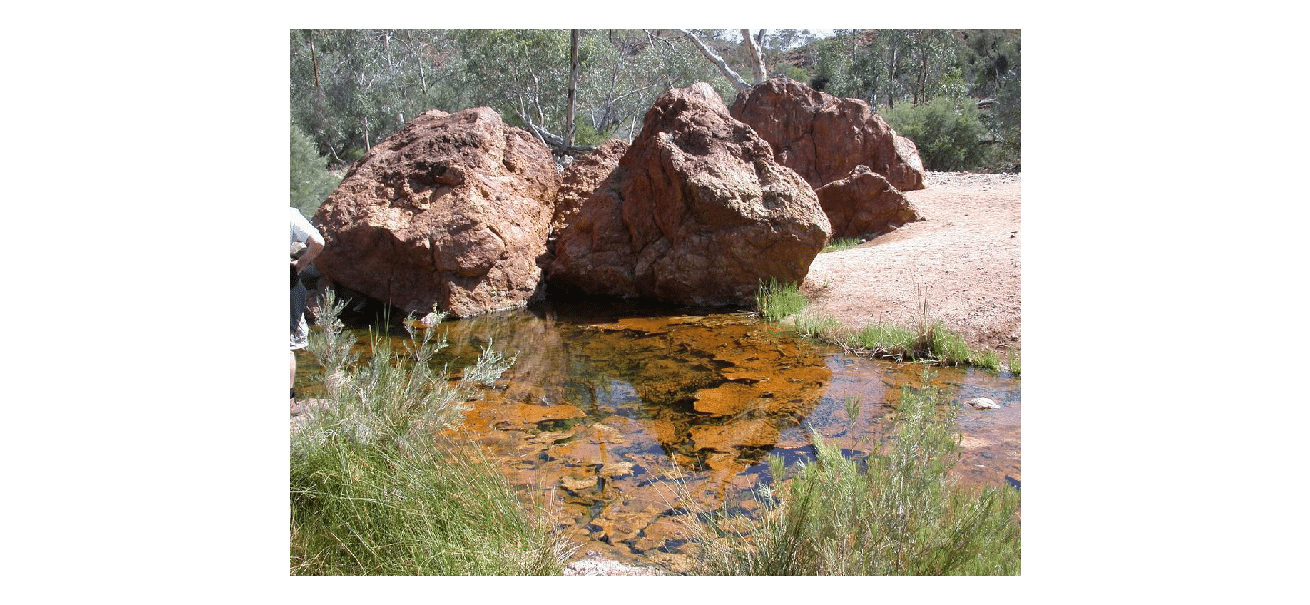GEOGRAPHIC EXTREMES SOCIETY
AUSTRALIAN RECORDS
Springs
Springs emanate when water is forced to the surface from underground storages. The largest springs are formed in the Great Artesian Basin, where sandstone layers allow water to penetrate and then saturate the porous rocks. Non-porous rock layers trap the water, and it gravitates through the sandstone strata, being pushed behind by hydraulic pressure, which are at times exceedingly great.
Water enters the Great Artesian Basin primarily through the recharge margins, mainly on the east of the basin. The extensive sandy areas between Carnarvon Gorge National Park to the Expedition Range in central Queensland, the Gilbert River in north Queensland, and the Pilliga in northern New South Wales, act like giant sponges, soaking up any rainfall before sending it underground into the stratified sandstone. The lands surface at these recharge zones is comprised of very sandy soils, which in many cases immediately divert rainwater into the aquifers, rather than flowing into surface water rivers. The water seeps through pores between the grains of sand within the sandstones, flowing at the extraordinarily slow rate of between 1-5 metres per year.
From the recharge zones, the water then flows through the Great Artesian Basin aquifer until pressure forces it to the surface, at a spring or discharge point associated with fault lines. In some instances, in the offshore Carpentaria and Laura Basins, these discharge zones are hidden below sea level where marine springs exude freshwater and its accompanying sediment load into the surrounding sea.
The slow flow of water through the aquifer eventually meets fault lines or impediments within the aquifer, and the resultant water pressure then moves the water to the surface as a free-flowing spring. These springs tend to be more saline and sodic towards the south-western end of the Great Artesian Basin as the underground movement of the water accumulates soluble minerals. In many cases, the flat, desert environment allows the formation of mound springs which rise like raised pimples, disgorging underground fluids into the surrounding desert. The groundwater divests itself of the salts and minerals when it arrives at the surface of the mound spring, trickling off into short-lived runoff streams nearby.
Largest Mound Springs
The Elizabeth Springs complex, 80 kilometres southeast of Boulia in western Queensland, is certainly a contender. This grouping of around 30 mound springs is one of the largest clusters in Australia. Unfortunately, the tapping of the Great Artesian Basin 150 years ago has diminished the size and flow from Elizabeth Springs, which once supported a runoff creek which stretched over 30 kilometres. Today, just 5% of the original volume of water now flows from Elizabeth Springs, and all but one of the mound springs are considered extinct.

By far the largest of all the spring systems of Australia’s GAB, is the Dalhousie Springs on the western edge of the Simpson Desert in the far north of South Australia. The Dalhousie Spring complex covers approximately 70 km2, containing more than 60 springs. Along the underground fracture, named the Dalhousie Anticline, is an adjacent limestone plateau which indicates that there was once a larger, but now extinct spring group and the modern oasis is but a shadow of its past glory.
Largest Natural Spring Discharge
The output of each of Dalhousie springs varies, but the largest, which goes by the uninspiring name of CA5, pours out a whopping 14 million litres daily. The water that emerges from the aquifers to fill Dalhousie’s inviting pools could have potentially travelled for over a million years, from the recharge points in central and northern Queensland. Up to 80% of South Australia’s mound springs water output, and 40% of the total output of all Australian mound springs are estimated to disgorge at Dalhousie Springs.

Dalhousie Springs. Largest Mound Springs in Australia. Image: RJ Andrews
Other mound springs draw even more travellers than the Dalhousie Springs, such as those further down the Oodnadatta Track, in the region to the west of Lake Eyre. This area is dotted with numerous mound spring systems, some of which have become significant tourist attractions Blanche Cup, The Bubbler and Strangeways Springs are major focal points for those taking on the Oodnadatta Track between Marree and William Creek.
Artesian Springs
Artesian Springs differ because they are man-made bores which have tapped into the underlying aquifer and bought the water to the surface. In early stages of Artesian water utilisation, the water pressure was so strong at Charleville’s first bore head, a 40-metre-high geyser of water erupted, shooting sizeable rocks and stones into the air for them to rain over the assembled townsfolk. As we realise today, the water within the aquifer can be over 2 million years old, and the rate of aquifer recharge was soon eclipsed by the many bores discharging the water. In all, there are about 4,500 bores sunk into the Great Artesian Basin.

Charleville Artesian Bore Image: Queensland Library
Deepest Artesian Bore
The deepest artesian bore in Australia is the Springleigh Station Bore, 80 kilometres south-west of Blackall in central-west Queensland. Sinking the 2,136-metre bore began in 1913, but with the intervention of the war, it wasn’t completed until 1921.
Water tapped at a depth of 2,000 metres get heated by the underlying mantle and will usually come out of the ground at boiling point. Artesian hot springs differ from the vast majority of natural springs, which are heated and come to the surface of their own accord.
Hottest Natural Springs
Far North Queensland is home to the McBride Volcanic Province which includes the well-known Undara Lava Tubes, has some extremely hot natural springs. The summer monsoonal rain that drenches northern Australia, percolates down through faults and fractures in the bedrock, to become heated by the relatively shallow body of magma of the dormant volcanic province, which underlies the region. Once heated, the water makes its way back to the surface in several localities. The best-known of these locations are the Tallaroo Hot Springs and the Innot Hot Springs on the Kennedy Highway, a few hours west of Cairns. Both are popular places attracting travellers to spend time relaxing during the dry season of northern Australia.
Innot Hot springs were considered the hottest natural springs in Australia for some time. Today, the primary discharge point is covered with a large rock pile, presumably to protect visitors from the scalding water. Water emerging from the primary discharge point ranges in temperature. I have read of temperatures exceeding 80oC, but the highest temperature I have recorded with my probe was 66.2oC.

Innot Hot Springs. Image Mt Garnet Tourism
A James Cook University study reports a 71oC temperature at Innot Hot Springs with the heat of the spring known to vary year to year . The nearby but temporarily closed site at Tallaroo Hot Springs has a recorded temperature of 92oC .

Tallaroo Hot Springs. Hottest Natural Springs in Australia. Image: Tallaroo Hot Springs
Most Radioactive Springs
The most intriguing hot springs in Australia, and probably the world, has to be the Paralana Hot Springs in South Australia’s Flinders Ranges. The hot water emerging from these springs isn’t heated by conventional volcanic activity, but by the decay of radioactive elements within the uranium-rich granites of the Flinders Ranges. Water flowing over and through the radioactive granites is not only heated but also transports some radioactive, decaying elements to the surface. The Paralana Springs water is particularly rich in decayed radon gases. The dense radon-rich gases bubble at the surface, and then predominately drift harmlessly away into the atmosphere.

Paralana Hot Springs. Most radio-active springs in Australia. Image: Thomas et al 2012
Spring Records
GES Record: Largest Mound Spring complex in Australia – Dalhousie Springs. South Australia (Source: Friends of Mounds Springs publication )
GES Record: Largest Mound Spring in Australia- CA5. Dalhousie Springs. 14 million litres daily. (Source: Desert Fishes website )
GES Record: Hottest Natural Spring – Tallaroo Hot Springs, Far North Queensland. 92oC (Source: David Hudson, pers comm 2020 )
GES Record: Most Radioactive Spring in Australia – Paralana Hot Springs. (Source: Thomas et al 2012)
The Geographic Extremes Society welcomes any input as to the veracity of these records and we encourage everyone to contribute to these extreme records by contacting us to initiate the discussion
